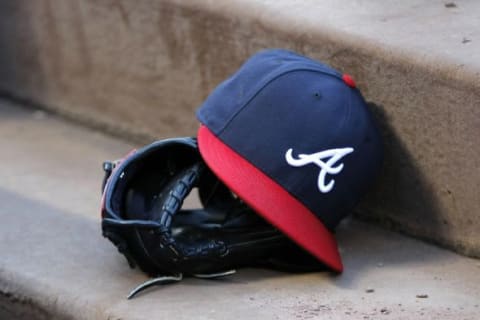Atlanta Braves Top 100 Prospect – #45 Robert Whalen Scouting Report


Atlanta Braves Right Hander Robert Whalen
Who Is He?
Rob Whalen was drafted in the 12th round of the 2012 draft by the New York Mets out of high school in Florida. He only made one appearance with the Mets’ Appalachian League team in Kingsport in his draft season.
The Mets returned him to Kingsport for 2013, and his numbers sparkled. Whalen posted a 1.87 ERA over 12 starts totaling 72 1/3 innings. In that time, he put up a 1.87 ERA, 0.93 WHIP, and 17/76 BB/K ratio. Though the numbers were excellent, he didn’t get much national attention, likely due to his lack of pedigree in being a later pick.
2014 was the first instance of what would become a bit of a bugaboo for Whalen over the last couple of seasons. The Mets started him in their low-A South Atlantic League team in Savannah. Injuries forced a few rehab starts with their Gulf Coast League team. All told, Whalen totaled a 1.94 ERA on the season over 14 appearances, 12 of them starts, throwing 69 2/3 innings. He also had a 0.99 WHIP and a 21/63 BB/K ratio in that time. The Mets wanted to get him a few more starts and sent him to the Arizona Fall League. Whalen didn’t fare so well there, sporting a 6.87 ERA over 18 1/3 innings with a 1.53 WHIP and a 10/15 BB/K.
Next: Whalen's scouting report
The Mets sent Whalen to their high-A club in St. Lucie in the Florida State League to start 2015. He performed well there, and he was actually the more highly touted of the pair of pitchers the Braves acquired in their midseason deal with the Mets, though John Gant‘s finish to the season really established him as a possible premier prospect while Whalen’s injury bug bit only 3 starts into his time with Carolina. Overall in 2015, he made 18 appearances, 17 of them starts. He once again tallied under 100 innings, finishing with 96 2/3 innings, totaling a 3.35 ERA, 1.25 WHIP, and a 38/68 BB/K ratio.

Rob Whalen Scouting Report
More from Tomahawk Take
- Atlanta Braves 2012 Prospect Review: Joey Terdoslavich
- Braves News: Braves sign Fuentes, Andruw’s HOF candidacy, more
- The Weakest Braves Homers Since 2015
- Atlanta Braves Sign Joshua Fuentes to Minor League Deal
- Braves News: New Year’s Eve comes with several questions about the 2023 Braves
I reviewed 5 of Whalen’s 2015 starts, having to do some extra research to find 4 of the 5. I wanted to get at least one of his starts as a Brave and then multiple of his starts total. In the 5 starts I was able to see, he put up a 1-2 record with a total line of 27 1/3 innings pitched, 2.63 ERA, 1.32 WHIP, and 14/20 BB/K ratio.
Whalen is listed on Baseball Reference at 6’2 and 200 pounds. I’d wager that he’s more around 215-220, but it’s certainly not bad weight. He’s mature physically, much like I mentioned with Lucas Sims earlier. His motion is very easy and repeatable, and he shows his athleticism off the mound, even making a great play on an “excuse me” swinging bunt in one of the games I saw that most pitchers would never have been able to get to. Even though he’s only 6’2, he stays tall in his delivery, releasing the ball at around 3/4 arm slot, but with a very good leg extension, creating a downward plane on his ball trajectory.
One of the major notes on Whalen in 2015 was his struggles in control. In fact, outside of his final appearance where he was injured after the first inning of pitching, he did not have a single appearance where he allowed no walks, and he walked 3 or more hitters in 7 of his 17 other appearances (not counting the final one-inning appearance), which is over 40% of his starts on the season!
As I watched his starts, I noted a few things in his delivery that I believed could lead to this control struggle. While his delivery is consistent, it is not without flaws. Whalen steps just a hair to the first base side with his landing foot as he comes down, which opens up his hips before he’s begun his true delivery to the plate. That forces him to utilize his trunk, hips, and arm for the majority of his control and velocity, which are two things where utilizing legs can be a tremendously stabilizing benefit for a pitcher. If the Braves wanted to work with Whalen on holding that hip closed and landing more dead on with the plate rather than open, he could even find another couple ticks of velocity by utilizing the power in his thick legs.
Whalen has a solid inning-grinding repertoire with a 92-94 MPH four-seam fastball that he uses infrequently, a sinker that sits around 89-92 that is his primary pitch, a tremendously effective slider that has some arm side run, a 12-6 curve ball, and a change up that sits in the 83-85 mph range. Last year’s Mets prospect report by Baseball America listed Whalen’s curve ball as the best in the Mets system, but Whalen has stated in an interview that it was likely the slider they were referring to, not his curve.
Whalen’s sinker has great effect in getting ground balls, as evidenced by his zone percentage of 77% strikes and ground ball percentage of 42%. His best starts were even more drastic with ground ball percentages over 55% and strike percentages over 80%. With a good defense behind him, he can do well, and that was evidenced as I watched his first two starts in Carolina, and you could tell in the second start, arguably his best start of the season, just how comfortable he was with the defense behind him featuring arguably the best outfield defensive trio the Braves system could put together in 2015 with Connor Lien, Keith Curcio, and Dustin Peterson along with high-end defenders like Carlos Franco and Johan Camargo on the left side of the infield.
Next: 2016 outlook
For Whalen, the biggest worry pitch right now is the change up. It really doesn’t distinguish itself enough from the fastball in velocity with only about a 5-8 MPH velocity difference, and its behavior isn’t close to his sinker, so it’s picked up fairly well compared to the sinker, which he throws much more than his four-seamer. I’m curious if a cutter or split-finger may be a better “change” fastball variation pitch for Whalen that could work well with his focus in the lower half of the zone rather than a true change if generating major velocity differences are an issue going forward, but more on that on the next slide.

Rob Whalen 2016 Outlook
Whalen’s injury time has been really due to one injury, an injury to his knee that cost him 2 months of 2014 and two different stints of at least a month of missed time in 2015 as well. He had surgery on the knee in the offseason, and I’m very, very curious to see how this could affect his control of his pitches because as any pitcher knows, your legs are vital to your velocity, command, and movement.
A quick and dirty tutorial in the difference between command and control: control is the ability to throw the ball for strikes, while command is the ability to throw the ball exactly where you want it. Whalen has certainly still been keeping the ball around the zone, as evidenced by his strike percentage, but his ability to command the pitches could be what is causing a guy throwing between 3/4 and 4/5 of his pitches in the strike zone to walk 3 or more hitters in 40% of his starts. Having both legs totally healthy could help Whalen add possibly an extra tick or two of velocity, some extra snap to his breaks, and most importantly, consistently command pitches where he wants it every time.
Next: Braves Top 100 Prospects Updated
Whalen will likely start back at Carolina to start this season, mainly due to the glut of pitchers the Braves have at AA and AAA. I’ll be very intrigued to see how the surgery this offseason affects Whalen’s ability to command his pitches, because with the sink he already gets, he could be a wickedly nasty ground-ball specialist #2/3 starter if he can command those pitches well in the zone. Think peak Ubaldo Jimenez for a guy with similar velocities and pitch selection, but also a warning story in how important staying around the zone is for a pitcher with those skills. I’m personally curious to see how much some of the things I noticed in his delivery change as he’s healthy.